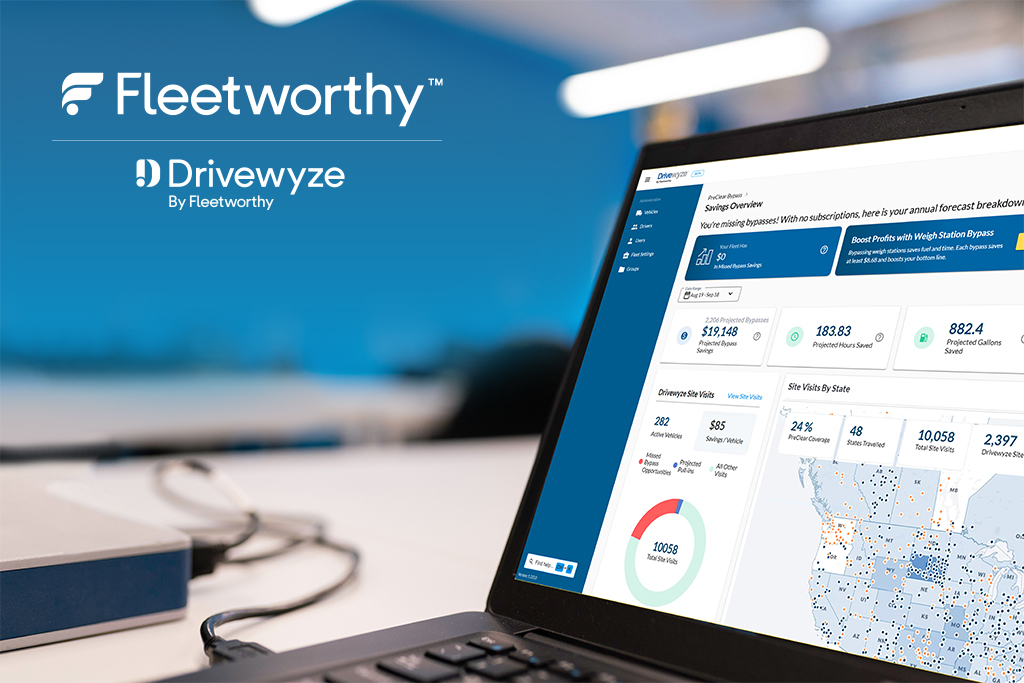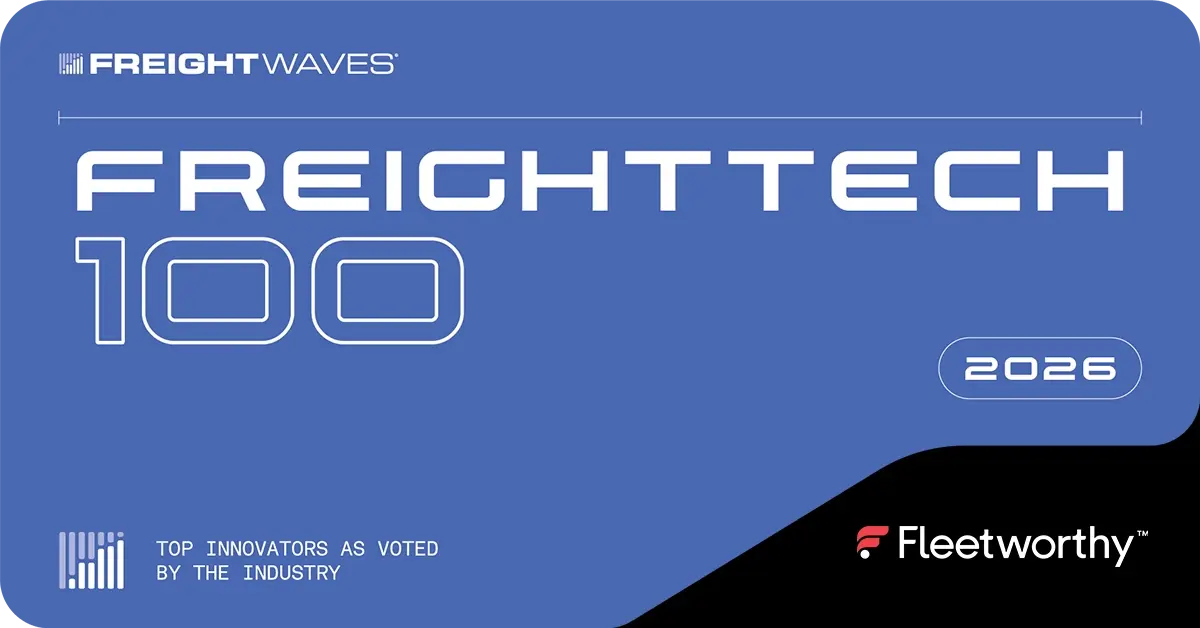For most fleets, fuel represents one of the most significant recurring operational expenses, often second only to labor. As a result, even modest improvements in fuel usage can lead to significant cost savings across the entire operation.
Reducing fuel consumption isn’t just about trimming the budget; it’s about maximizing fleet performance, minimizing environmental impact, and staying competitive in a rapidly evolving industry. Fleets that successfully lower fuel usage are better positioned to manage market fluctuations, improve their profit margins, and deliver consistent value to their customers.
At the heart of this effort lies fuel cost management, a strategic approach to monitoring, controlling, and optimizing fuel usage in fleets. With rising fuel prices and increasing pressure to operate sustainably, fleet operators must adopt more innovative tools, implement efficient practices, and foster a culture of fuel-conscious driving.
In this article, we’ll explore practical strategies to improve fleet fuel efficiency, lower fuel usage, and ultimately reduce operational costs while maintaining high levels of safety and productivity.
Why Fuel Efficiency Matters for Fleets
Fuel expenses comprise a substantial portion of a fleet’s operating budget, typically accounting for 20% to 40% of total costs, depending on the type and size of the fleet. With margins already razor-thin in many sectors, such as freight, last-mile delivery, and construction, inefficient fuel use can quickly erode profitability. This makes fuel efficiency a critical factor in controlling costs and maintaining financial stability across the organization.
Beyond the immediate financial implications, there are broader operational and reputational concerns tied to fuel usage. A growing number of shippers, regulators, and customers are prioritizing sustainability and carbon reduction. Fleets that optimize fuel efficiency not only lower their operating expenses but also reduce greenhouse gas emissions, enhancing their environmental footprint and appeal to ESG-conscious clients.
Volatility in global fuel markets adds yet another layer of urgency. Fluctuating diesel and gasoline prices, often driven by geopolitical tensions, supply chain disruptions, or regulatory change,s can strain budgets with little warning. While fleets can’t control fuel prices, they can control how efficiently they consume it. That’s why a proactive focus on reducing fleet fuel costs is essential not just as a short-term savings tactic, but as a long-term strategy for resilience.
Ultimately, fuel efficiency isn’t just about using less fuel it’s about using fuel smarter. Fleets that prioritize efficiency as a strategic objective are better positioned to weather market shifts, remain compliant, meet sustainability goals, and enhance their competitive edge.
How to Monitor Fleet Fuel Consumption
Effective fuel efficiency starts with visibility. Without accurate, real-time data, it’s nearly impossible to identify where and how fuel is being wasted or to make informed decisions that reduce fuel use across your fleet. Learning how to monitor fleet fuel consumption is the foundation for successful fuel cost management, and it begins with the right tools and data strategies.
Telematics Systems and Fuel Tracking Tools
Modern telematics platforms are indispensable for fuel monitoring. These systems collect detailed data on vehicle performance, driver behavior, engine diagnostics, and fuel usage all in real time. Fuel tracking tools, often integrated with telematics or available as standalone software, provide granular insights into fuel consumption, such as per trip, per vehicle, or per driver.
By leveraging these technologies, fleet managers can track trends, compare actual fuel usage against expected benchmarks, and quickly detect anomalies such as fuel theft, inefficient driving habits, or malfunctioning components that lead to excess consumption.
Importance of Real-Time Data and Analytics
Access to real-time data enables fuel monitoring to transition from a reactive process to a proactive strategy. When fleets can monitor fuel consumption live, they gain the ability to respond immediately to issues whether it’s a driver idling excessively, a poorly planned route adding unnecessary mileage, or a vehicle operating below peak efficiency.
Real-time analytics also enable predictive decision-making. Over time, fleets can identify high-consumption patterns and proactively intervene with coaching, maintenance, or routing changes that drive long-term improvements.
Integrating GPS and Fuel Card Data for Insights
Combining GPS tracking with fuel card data offers a powerful lens into both operational behavior and purchasing patterns. GPS reveals the actual routes vehicles take, while fuel card data shows when, where, and how much fuel is purchased.
When integrated, this data helps identify inconsistencies such as fuel purchases not aligning with vehicle location or pinpoint opportunities to optimize refueling practices, like selecting lower-cost stations or planning fuel stops more strategically. This integration is a core component of monitoring fleet fuel consumption with precision.
Benefits of Automated Reporting and Alerts
Manual fuel tracking is both time-consuming and error-prone. Automated reporting systems address this by delivering consistent and accurate reports on fuel usage metrics such as average miles per gallon (MPG), fuel spend per route, or consumption trends by vehicle type.
Custom alerts further enhance oversight by notifying managers of unusual activity in real time. For example, alerts can be triggered by sudden spikes in fuel consumption, prolonged idling, or unauthorized refueling. This level of automation enables faster corrective action, reduces administrative burden, and ensures no issue goes unnoticed.
Key Strategies to Lower Fuel Usage and Costs
Once you’ve established visibility into your fleet’s fuel consumption, the next step is action. Implementing strategic measures across operations, vehicles, and driver behavior is crucial for reducing fuel consumption and achieving sustainable savings. Below are five high-impact strategies fleets can use to drive measurable improvements in efficiency and cost control.
Route Optimization
Every extra mile traveled unnecessarily adds to your fuel bill. Advanced route optimization tools powered by artificial intelligence and machine learning help fleets minimize mileage, avoid traffic delays, and reduce idle time.
These systems analyze historical traffic patterns, weather, load types, and real-time road conditions to generate the most fuel-efficient routes. By limiting detours, improving delivery sequencing, and ensuring that vehicles spend less time idling at stops or in congestion, fleets can significantly lower fuel usage and operating hours.
Implementing AI-based route optimization doesn’t just reduce fuel waste it also improves customer satisfaction through more accurate ETAs and helps extend vehicle lifespan by minimizing wear and tear.
Driver Behavior Monitoring
Driver behavior is one of the biggest variables affecting fuel efficiency. Aggressive acceleration, harsh braking, speeding, and prolonged idling all contribute to excessive fuel consumption and increased maintenance needs.
Telematics systems and dashcams enable fleet managers to track these behaviors in real-time. By providing data-driven feedback and ongoing coaching, companies can correct poor habits and reward efficient driving practices.
Building a driver performance program centered on safety and efficiency helps fleets lower fuel consumption and reinforces a culture of accountability. Many fleets see a measurable return on investment within months of implementing behavior monitoring systems, especially when combined with driver scorecards and incentives.
Vehicle Maintenance
A well-maintained vehicle burns less fuel it’s that simple. Poor maintenance leads to inefficient combustion, increased drag, and more frequent breakdowns, all of which raise your fuel and operating costs.
Routine maintenance tasks that directly impact fuel efficiency include:
- Keeping tires properly inflated to reduce rolling resistance
- Replace dirty air filters to ensure optimal engine airflow
- Regularly checking engine diagnostics to avoid issues like misfires or sensor malfunctions
Following a preventive maintenance schedule and using telematics alerts to stay on top of it is a critical part of effective fuel cost management.
Fuel-Efficient Vehicles and Spec’ing
Vehicle selection also plays a significant role in overall fleet fuel efficiency. Newer models are often equipped with fuel-saving technologies, including engine start-stop systems, lightweight materials, improved aerodynamics, and hybrid or electric drivetrains.
When acquiring new vehicles or updating specifications, fleet managers should consider:
- Engine size and fuel type appropriate for route profile
- Aerodynamic add-ons for highway fleets (e.g., side fairings, trailer skirts)
- Alternative fuel options such as CNG, electric, or biodiesel
Investing in the right vehicles can deliver long-term savings and support broader sustainability goals. While upfront costs may be higher, the return on investment often comes quickly through reduced fuel usage and maintenance needs.
Idle Reduction Programs
Unnecessary idling is one of the most avoidable sources of fuel waste yet it’s also one of the most common. A single hour of idling can consume up to a gallon of fuel, depending on the vehicle’s fuel efficiency.
Idle reduction strategies should include:
- Educating drivers on the cost and environmental impact of idling
- Implementing idle shutoff timers or automatic engine start-stop systems
- Using auxiliary power units (APUs) or battery-powered HVAC systems for comfort without engine use
By implementing clear policies and tools to address idling, fleets can quickly reduce their fuel costs and demonstrate a commitment to operational efficiency and environmental stewardship.
Fuel Cost Management Best Practices
Successful fuel cost management goes beyond monitoring consumption it requires structured processes, accurate benchmarking, disciplined spending controls, and data-informed decision-making. By implementing the following best practices, fleets can tighten control over fuel-related expenses and improve long-term cost predictability.
Establishing Baselines and KPIs
The first step in effective fuel cost management is establishing a clear baseline for current fuel performance. This includes calculating metrics such as:
- Average miles per gallon (MPG) by vehicle type
- Fuel spend per mile or per route
- Idling time as a percentage of total engine hours
- Fuel costs as a percentage of total operating expenses
Once baselines are established, fleets can set specific, measurable key performance indicators (KPIs) that are aligned with their operational goals. These KPIs should be tracked consistently and reviewed regularly to monitor progress and identify areas for improvement.
Baseline data also provides a benchmark for evaluating the impact of new strategies, such as route optimization, driver training, or specification changes.
Using Fuel Cards with Purchase Controls
Fuel cards are a core tool in fuel cost management but only when used correctly. By implementing fuel cards across the fleet, managers gain centralized control over fuel purchases, reducing the risk of fraud, misuse, or inefficient refueling.
Best practices for fuel card management include:
- Limiting purchases to fuel only (excluding snacks, car washes, etc.)
- Restricting transactions by location, time of day, or dollar amount
- Requiring vehicle ID and driver PIN at each purchase
- Monitoring transaction reports for anomalies
When paired with telematics and GPS data, fuel card systems provide a transparent and verifiable record of fuel spend, helping to enforce smart refueling habits.
Supplier Negotiations and Bulk Purchasing Strategies
Fleets that purchase large volumes of fuel may benefit from negotiating directly with fuel suppliers to secure volume discounts, fixed-rate contracts, or cost-plus pricing models. These agreements can buffer fleets against market volatility and provide more predictable budgeting.
In addition to supplier contracts, consider:
- Setting up on-site bulk fuel storage to reduce retail station reliance
- Joining fuel purchasing cooperatives or regional consortia
- Exploring mobile refueling solutions for specific fleet types
These strategies can streamline fueling operations and reduce per-gallon costs key objectives of strategic fuel cost management.
Monitoring Cost Per Mile and MPG by Vehicle and Driver
Fuel efficiency isn’t just a fleet-wide metric it varies by individual driver, vehicle, and route. Monitoring cost per mile and MPG at a granular level helps identify top performers, flag underperforming assets, and uncover inefficiencies that would otherwise go unnoticed.
Consider creating dashboards or reports that break down:
- MPG by vehicle make, model, and year
- Fuel cost per mile by route type (urban, highway, mixed)
- Driver-specific MPG averages compared to fleet benchmarks
Sharing these insights with drivers can support performance-based incentives and reinforce accountability. For underperforming units, the data can guide decisions around maintenance, reassignment, or replacement.
Technology and Tools to Support Fuel Efficiency
Technology is no longer optional in modern fleet management it’s essential for achieving and sustaining fuel efficiency. With the right digital tools, fleet operators can gain deeper insight into fuel usage, streamline operations, and automate processes that previously required hours of manual work. This section examines the most significant platforms and technologies that facilitate smarter fuel use and long-term cost reduction.
Overview of Platforms That Help Monitor and Improve Fuel Usage
Comprehensive fleet management platforms now offer a suite of integrated tools designed specifically for fuel efficiency optimization. These systems provide a centralized view of fuel-related data, combining vehicle diagnostics, trip history, fuel purchases, and driver performance into a single dashboard.
Key features often include:
- Real-time fuel consumption tracking
- Automated reports on MPG and cost-per-mile
- Driver behavior scoring
- Route efficiency analysis
- Maintenance reminders based on performance data
By consolidating these insights, fleet managers can move from reactive to proactive decision-making and uncover new opportunities to lower fuel costs.
Telematics Integrations, Mobile Apps, and Analytics Dashboards
Telematics remains the backbone of most fuel efficiency efforts. When paired with mobile apps and web-based dashboards, telematics systems become even more powerful, allowing managers to monitor performance on the go and drivers to receive in-cab feedback in real-time.
Examples of technology integrations that enhance fuel cost management:
- Mobile fuel tracking apps that sync with telematics and fuel cards
- Custom dashboards that visualize key fuel metrics like idle time, average speed, and route deviation
- Driver-facing apps that provide real-time feedback on fuel-efficient driving habits
- Maintenance modules that trigger alerts when fuel-related issues arise (e.g., low tire pressure, faulty oxygen sensors)
These tools enable easier remote performance management, effective driver training, and maintaining fleet-wide accountability.
Predictive Analytics and AI for Fuel Optimization
The next frontier in fuel efficiency lies in the application of predictive analytics and artificial intelligence. These technologies analyze large volumes of historical and real-time data to forecast future performance and provide recommendations for specific actions.
Examples include:
- Predictive maintenance models that anticipate fuel-wasting failures before they happen
- AI route engines that adapt based on traffic patterns, weather, and delivery urgency
- Fuel pricing tools that suggest optimal fueling locations based on route and cost
- Driver performance prediction based on historical trends, enabling targeted coaching
These solutions take fuel cost management to the next level, allowing fleets to anticipate challenges rather than react to them, and continuously improve fuel efficiency with reduced manual oversight.
Training and Policy Development
No matter how advanced your technology or efficient your vehicles, your drivers remain the most important factor in determining fleet fuel performance. That’s why investing in well-structured training and policy development is crucial for achieving sustainable results in fuel efficiency and cost management. A clear framework combined with consistent coaching and incentives ensures that fuel-saving behaviors are reinforced and maintained over the long term.
Driver Training Programs Focused on Fuel-Efficient Driving
Fuel-efficient driving isn’t just about going slower, it’s about being deliberate, smooth, and aware. Driver training programs should educate operators on specific behaviors and techniques that directly influence fuel usage, including:
- Progressive shifting and steady acceleration
- Maintaining consistent speeds and using cruise control when appropriate
- Minimizing harsh braking and unnecessary idling
- Anticipating traffic patterns and avoiding aggressive maneuvers
Hands-on training sessions, supported by real-world data from telematics or dashcams, help drivers connect their habits to measurable fuel outcomes. Even experienced drivers can benefit from periodic refresher courses and ride-alongs that reinforce best practices.
Many fleets that implement targeted training programs report a fuel efficiency improvement of 5–15% per driver, without any additional investment in equipment.
Creating a Fuel Efficiency Policy and Compliance Incentives
To ensure consistency across your operation, it’s important to formalize your expectations with a written fuel efficiency policy. This policy should clearly outline:
- Acceptable and unacceptable driving behaviors
- Idling limits and procedures
- Refueling protocols (e.g., preferred stations, card use, receipt documentation)
- Required participation in training or coaching sessions
Pairing this policy with a compliance tracking system allows fleet managers to monitor performance and address outliers. However, enforcement should not be punitive by default incentives often deliver better long-term results.
Examples of fuel-efficiency incentive programs include:
- Recognition or rewards for top-performing drivers based on MPG or idle time
- Team-based contests that encourage peer accountability
- Fuel efficiency bonuses tied to safety and maintenance metrics
These programs not only support fuel cost management but also boost morale and driver retention by recognizing positive contributions.
Regular Reviews and Data-Informed Coaching
Fuel-efficient driving isn’t a one-time goal, it’s a continuous improvement process. Regularly reviewing driver performance data and conducting one-on-one coaching sessions can help reinforce good habits, correct problem areas, and build trust between drivers and management.
Best practices for data-informed coaching include:
- Scheduling quarterly or monthly reviews using individual driver scorecards
- Providing specific feedback tied to telematics events (e.g., speeding, rapid acceleration)
- Using visuals like graphs or route maps to make data more actionable
- Encouraging two-way dialogue and involving drivers in problem-solving
Combining coaching with transparent data builds a culture of mutual accountability. It also helps managers shift from micromanagement to mentorship, leading to higher engagement and more sustainable fuel savings.
Measuring Success and Continuous Improvement
Implementing fuel efficiency strategies and operational improvements is only part of the journey. To sustain progress and achieve long-term results, fleets must adopt a culture of continuous improvement, one that values data, sets clear expectations, and celebrates progress. This section outlines how to measure success, track key metrics, and keep both leadership and drivers engaged in ongoing optimization.
Setting Benchmarks and Tracking Progress
Success begins with clarity. Establishing measurable benchmarks ensures that all managers, drivers, and technicians understand what success looks like and how to contribute to it. These benchmarks should be grounded in your fleet’s operational realities and aligned with both short- and long-term goals.
Common benchmarks include:
- Target MPG by vehicle type
- Fuel cost per mile
- Percentage reduction in idle time
- Maintenance cost per vehicle
- On-time performance and delivery efficiency
Use these targets to evaluate new initiatives, compare performance across regions or drivers, and make informed decisions about resource allocation. Without benchmarks, it’s impossible to distinguish between temporary improvements and sustainable success.
Leveraging Data for Ongoing Adjustments
Data is the engine of continuous improvement. Once benchmarks are in place, fleets must utilize real-time and historical data to identify trends, spot opportunities, and adjust their course when necessary. The most successful fleets don’t just collect data they act on it.
Key tactics for data-driven refinement include:
- Using fleet management dashboards to visualize trends and KPIs
- Conducting monthly or quarterly performance reviews by asset, route, or driver
- Analyzing anomalies (e.g., sudden fuel spikes, underperforming vehicles)
- Testing small changes (A/B testing of routes or maintenance schedules) and measuring impact
Data insights can reveal hidden costs, untapped efficiencies, and evolving risks. Whether it’s identifying an aging vehicle dragging down your MPG or a route that consistently causes delays, proactive analysis ensures you’re always moving forward.
Celebrating Wins and Engaging Drivers
Drivers are the frontline of your fuel and cost-saving initiatives. Keeping them informed, motivated, and involved is essential to maintaining momentum. Recognition and engagement not only boost morale but also reinforce the behaviors and practices that lead to operational excellence.
Effective ways to engage and celebrate include:
- Highlighting top-performing drivers in newsletters, team meetings, or internal dashboards
- Offering performance-based rewards (bonuses, gift cards, or additional PTO)
- Gamifying performance tracking with leaderboards or team-based challenges
- Soliciting driver feedback to improve processes, tools, and training programs
Recognition doesn’t have to be expensive; what matters most is consistency and authenticity. A simple thank-you or shout-out for improved MPG can go a long way toward building trust and reinforcing a safety- and efficiency-first culture.
Conclusion
Improving fleet fuel efficiency is no longer a secondary objective it’s a strategic imperative for fleets that want to reduce costs, increase operational resilience, and stay competitive in a rapidly evolving transportation landscape. From monitoring real-time fuel data to training drivers and adopting predictive technologies, today’s fleets have more tools than ever to drive meaningful and measurable change.
Fleets that incorporate proactive fuel cost management into their overall strategy will be best positioned to adapt to market changes, meet compliance expectations, and lead the industry in efficiency and sustainability.
By turning insights into action and embedding efficiency into everyday operations, your fleet can unlock significant savings not just at the pump, but across your entire business.




